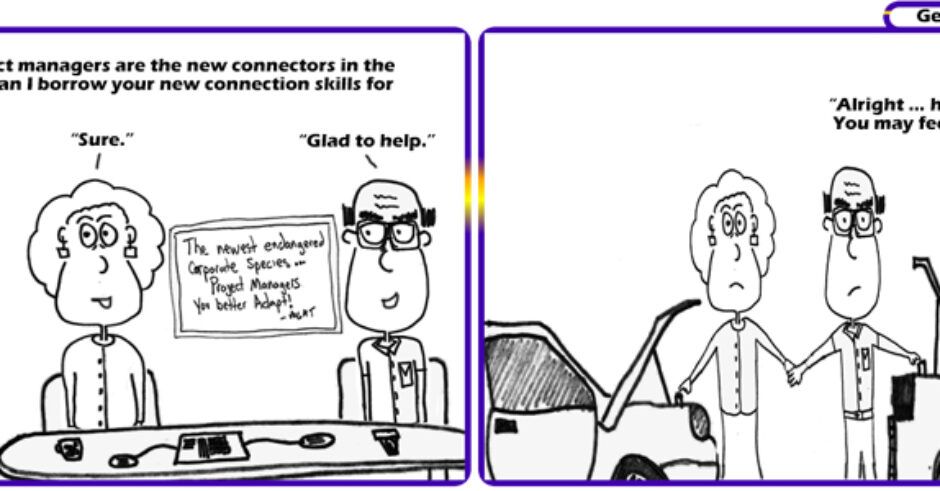Connections are a common point of failure in organizations. In response, most companies create roles for people to manage those connections and ensure that things don’t “fall through the cracks.” The project manager is a popular role that serves this function.
Traditionally, project managers ensure that things don’t fall between the cracks by coordinating and tracking each and every connection. The project manager makes sure the gears line up and mesh properly. In an increasingly complex world, this has become a herculean task.
What we flipped the Project Manager’s role on its head? What if the project manager was responsible for creating connections but not for managing the actual coordination? Stop being a middleman, a go-between and instead be a facilitator. Let’s see what this might look like.
Here are some activities that a PM might consider swapping out.
Stop Managing Tasks. Start Creating Connections.
Traditionally a PM would figure out when task A needs to be completed so that task B can be done on time. The project plan shows all the dependencies between tasks. Forget all that.
Bring the two teams together, create a forum for them to discuss how they need to work together to be done on time and meet the desired outcome. Help by using facilitation techniques for the teams to have a productive discussion. I have found it useful to hang up large swaths of butcher paper and let the teams map out dependencies visually on the wall.
Once the PM has created the connection, they can step back and let the team work together. As a PM all you need to track is the final delivery.
Stop Reporting Status. Start Connecting Teams to their Sponsors.
Project managers are usually responsible for bringing status up the mountain. They then stand in the storm while all problems are put on their shoulders, and no help is sent back to the team.
What if the Project Manager connected the team with the Sponsors? In the past, it was cumbersome for sponsors to talk to the team, and believed to be more efficient to have a single point of contact. In our attempt to be efficient, we’ve lost the connection between the people doing the work and the people asking for the work.
The Project Manager can help smooth this communication by creating a container for the two parties to have an effective dialogue.
Stop Managing Execution. Start Connecting Strategy to Execution.
Connecting strategy to execution is the holy grail of most organizations. Project managers are in a unique position to help here. Project managers typically work to define tasks very clearly so they can be assigned to people and executed. The problem is that this limits the brainpower you get from the assignee, drastically reducing the overall brainpower at work in your organization.
Instead, try shifting focus to ensure that the people executing the work truly understand the strategy. Then work together to define the tasks. You will be surprised at the results you get when everyone is thinking.
What is your view on connectors? We’d love to hear from you!
The Business Transformation Network has posted this article in partnership with WorkBytes.


